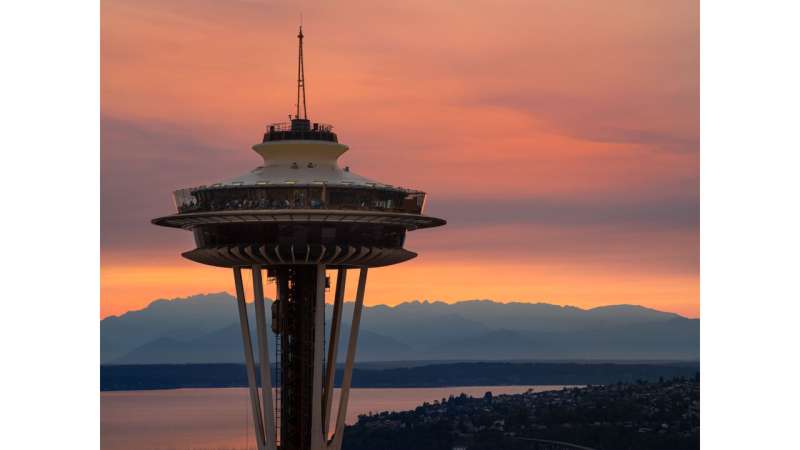Sounding off on Seattle Space Needle renovation
[ad_1]

The Seattle Space Needle, a city landmark for nearly 60 years, recently underwent a renovation to enhance the visitor experience. Acoustic designers were tasked with ensuring that the new design is a quiet one.
During the 181st Meeting of the Acoustical Society of America, which will be held Nov. 29-Dec. 3, Daniel Bruck and Jaimie Penzell, from BRC Acoustics, will discuss how the Seattle Space Needle renovation incorporated acoustic designs targeted toward limiting unnecessary sound transmission. The talk, “The Seattle Space Needle renovation: Acoustical design considerations and challenges at 600 feet above ground level,” will take place Thursday, Dec. 2.
The Seattle Space Needle is one of the most recognizable landmarks in North America, having had 60 million visitors since it opened in 1962. In late 2017, a renovation project titled “The Century Project” began, developing the tower’s internal structure, while expanding and improving its views.
Bruck and his team developed the acoustical design criteria for the renovation project, enhancing future visitor experience.
The needle revamp has an improved observation deck with 360 degrees of uninterrupted views of Seattle and the surrounding area, as well as The Loupe—the world’s first and only rotating glass floor restaurant.
“Acoustical materials were selected to complement the architectural concept for the spaces and provide effective reverberant sound control,” said Bruck. “Particular areas for design were the observation levels, which was noisy during high visitor periods, and the restaurant. Sound isolation between the two was also an important component.”
Mechanical system noise control was an essential consideration, as the newly installed revolving floor mechanism requires 12 motors to operate 37 tons of weight.
“The original building from 1962 was not designed for modern equipment, and there was absolutely no room to expand the footprint of the mechanical rooms,” said Bruck. “The machinery and system were completely redesigned to provide an innovative approach to moving the rotating floor reliably into the future.”
acousticalsociety.org/asa-meetings/
Citation:
Sounding off on Seattle Space Needle renovation (2021, December 2)
retrieved 2 December 2021
from https://phys.org/news/2021-12-seattle-space-needle-renovation.html
This document is subject to copyright. Apart from any fair dealing for the purpose of private study or research, no
part may be reproduced without the written permission. The content is provided for information purposes only.
[ad_2]
Original Post


88 thoughts on “Sounding off on Seattle Space Needle renovation”